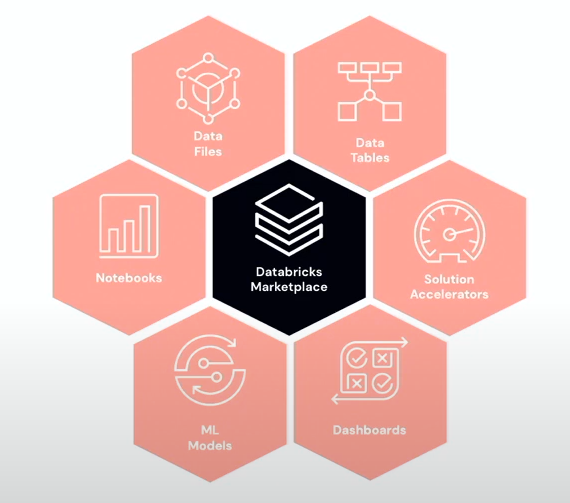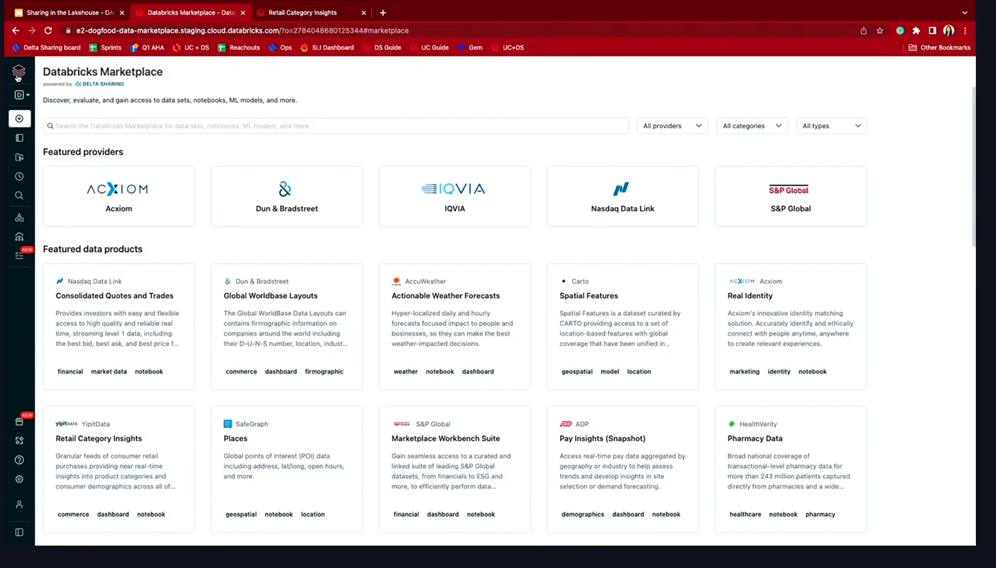What is a “Marketplace” in general?
A marketplace is a single platform that allows us to discover, evaluate and access data assets along with providing value-adding capabilities such as Data discovery & some first Data analysis.
A marketplace helps distribute and monetize all your data assets. Some of the marketplace tool examples are Microsoft's Azure Data Market, Salesforce‘s data.com, and now also the Databricks Marketplace.
How do you choose a data Marketplace?
All above-mentioned tools do serve as a marketplace but it is very important to go through the following checklist when choosing a marketplace for business-wide use as these decisions are made one time and the impacts endure for long.
- Relevance & context of the data: Does it provide enough context of where the data comes from, who are the providers, and consumers, and how it can be consumed? Is the data relevant for your use case?
- Data freshness: Does the tool ensure data freshness, has any SLAs defined, and is scoring being done on the assets?
- Is data reliable: How often the data is being used, has it been externally verified, and/or is there a health score of data?
- Too restrictive: Is the data sharing free from vendor lock-in?
What is the “Databricks Marketplace”:
Databricks offer its users the Databricks marketplace as “an open marketplace to exchange data products including datasets, notebooks, dashboards, and any other data assets all powered by delta sharing”.

The Marketplace is a UI platform featuring the data providers, their data products, and means to evaluate the assets and ease to access all in one place. This is what Databricks Marketplace will look like. You can list the products by providers, categories, and types. Explore the products to understand, evaluate and use.

How does it benefit a data consumer?
- Open and seamless access to data products: It is a platform-independent tool allowing you to break out of vendor lock-in, meaning you need not be on the Databricks platform to access the marketplace. You can access from compute of your choice as it is a cross-cloud, cross-platform cross region solution.
- Frictionless evaluation and accelerated insights: With exemplary assets on how to use data, you will be upto speed in no time to quickly understand datasets.
How does it benefit a data provider?
If you are wearing the hat of a data provider, you must be looking for
- Acquisition: Attract new customers by showcasing the value your data assets can bring, it requires enlisting your assets in one single place as one-stop shop.
- Expansion: Reach out to new customers in current account, being backed up by delta sharing, it has been very easy to subscribe to the data assets and this helps with the expansion of the customer base.
- Retention: A better experience for current customers, again the seamless access, and evaluation of assets does make it stand out as one of its kind product.
Conclusion:
In the world of rapidly growing architectures where we all want to create mesh architectures and collaborate on data, a marketplace is a “must-have” candy in every magician’s Jar and Databricks marketplace comes with a promising future. We at element61 are excited to help out our customers. Contact us for coaching, training, advice, and implementation.